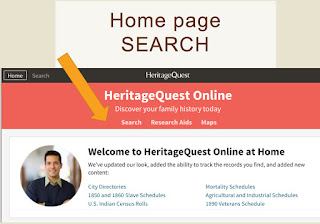 |
| Facts on Great-Grandma Tillie Jacobs Mahler's family tree, with attached media |
This way, the digital media will be in my genealogy file folders (arranged by surname and/or family) and in my genealogy software.
Just as important, I'm making sure these media images (Census, vital records, and more) will be visible to anyone who finds my public family trees. I welcome cousins browsing my trees and would love to imagine them clicking to see the media image for themselves. In reality, this is a long shot, but at least the media are visible because the trees are public.
Download, then upload family history media
After I download an image related to a source (such as a Census page), I rename it and save it in the proper digital folder. I also add it to my genealogy software.
The next step is to upload that source as an image to support the related fact on my online tree. You can see what that looks like on my paternal great-grandma's Ancestry tree, shown above in excerpted form. You can see a thumbnail preview of the uploaded media next to the related facts.
Census pages are unlikely to be totally withdrawn from public view, IMHO, because they are so widely available. Especially when the transcription or indexing is squirrelly, I will occasionally attach a blowup of the relevant section as the media rather than the entire page to support a fact. I did this for the 1900 US Census and 1905 NY Census in my tree, above.
Media for possible cousins and future genealogists
OK, I'm late to this party. I was delighted at the distant cousin who not only attached actual Census pages and other media but summarized the contents in the comments area--especially full street addresses or other details. I know he's a careful researcher and I can see at a glance where he says our common ancestors lived or died. Thank you!
When researching common surnames like WOOD, having the ability to quickly check an original source is a big plus. I like to think I'm helping my husband's cousins and future genealogists by attaching the media and not relying solely on links to source citations.
I'm approaching this as a long series of bite-sized projects. One ancestor at a time, I'm capturing, downloading, uploading, and attaching source media. One at a time, not all at once. No tree ever grew in a day.

























